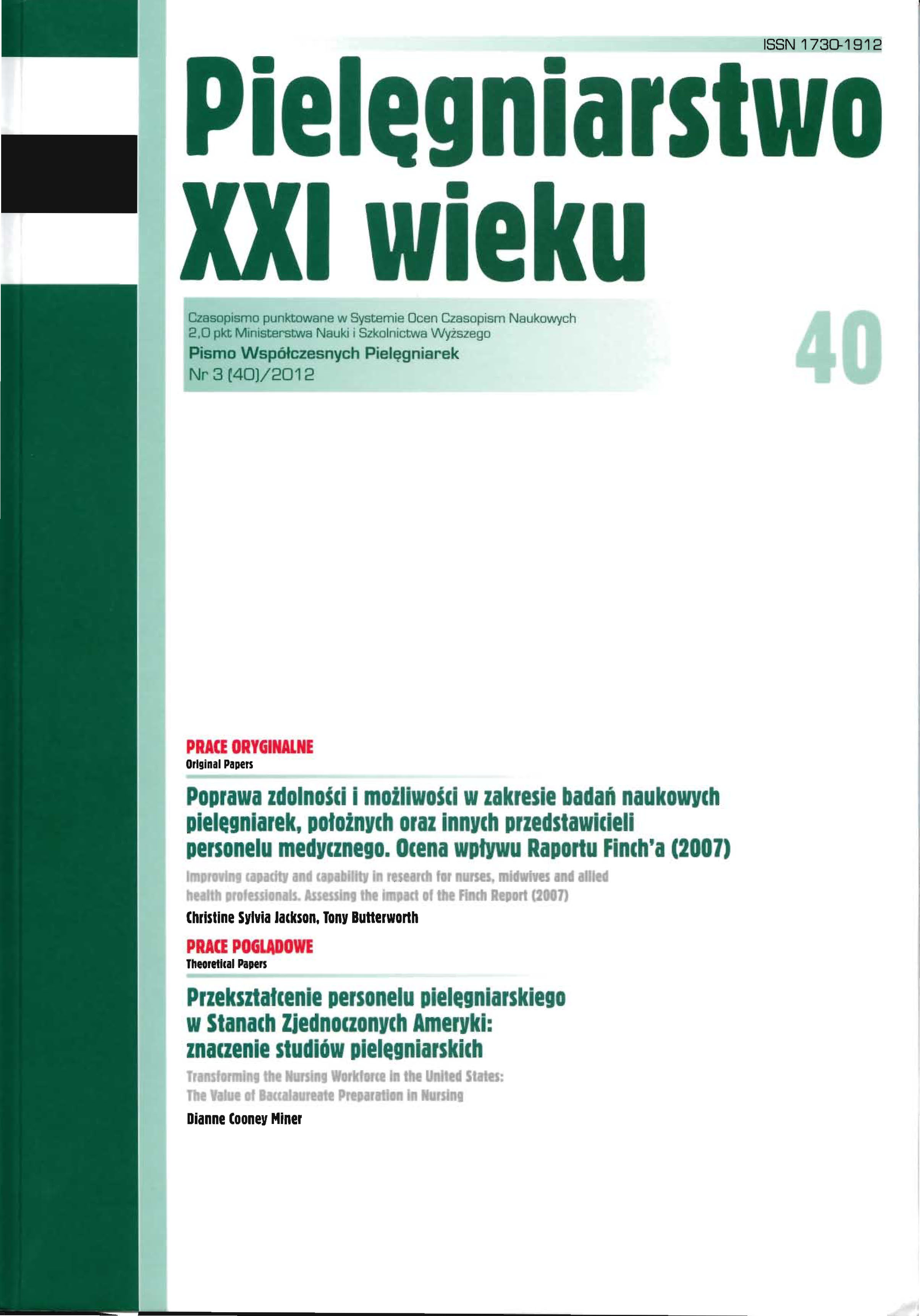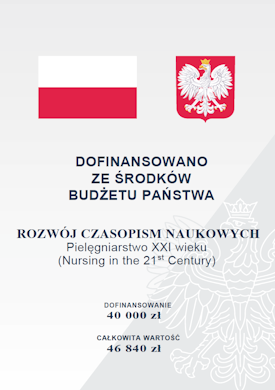Patient satisfaction with nursing care – survey among nurses and patients
Keywords:
patient satisfaction, nursing care, nurse, job satisfactionAbstract
PATIENT SATISFACTION WITH NURSING CARE – SURVEY AMONG NURSES AND PATIENTS
Introduction. Assessment of customer satisfaction is an essential element of improving quality of health institutions, the requirement of quality nursing care and measure of the patient's attitude toward nurses, the health care system and received nursing care. Human resources are the most important resource of any organization. By working people seek to achieve: economic stability, identity and personality development, status and prestige, independence, creativity, social interaction. The nurses, through working want to develop and pursue their goals, to use and develop their talents and skills, to achieve operating results and achievements that will be recognized. In all countries, nurses and quality of hospital work environment (support of superiors, good relationships among doctors and nurses, nurses’ participation in decision-making, quality of care) were significantly associated with patient satisfaction, safety and quality of care, as well as the results of nurses’ work. Specifically, hospitals with a good working environment and professional staff have better outcomes for patients and nurses.
Aim. To determine the level of patient satisfaction in relation to the organization of nursing care in the hospital and nurse-patient relationship.
Material and method. A cross sectional study in population of nurses and patients hospitalized in surgical and internal medicine departments was done. The sample consisted of 126 nurses and 148 patients. The data was obtained using a specially designed anonymous questionnaire for patients and nurses who adapted for our conditions. Two kinds of outcomes were considered nursing outcomes: hospital staff, working environment, the intention of leaving the profession, quality of care, communication with colleagues and superiors, and patients outcomes: satisfaction with nursing care, hospital treatment, willingness to recommend hospital to others.
Results. The nurses conducted interviews with 51% of patients about the assistance they would need after discharge, while 72% of patients received instructions about the proceedings after discharge. Half of patients rated hospital with 10 and 8 points (respectively 28% and 24%); they would recommend hospital to friends in 54%. High standards in providing care are always expected according to 48.8% of nurses. Nurses make decisions based on patients’ and their families’ needs in 42.1%; they always encourage conversation with patients (38%) and 71.1% of nurses always have the opportunity treat patients in a decent way. The results indicate presence of the burnout syndrome (sometimes 44.6%).
Conclusions: Although there are differences in the organization and resources, the results of our study are similar to studies from other countries. High demands of the job, high expectations of the management, little autonomy in decision-making process, understaffing, their devotion to the work and needs of patients, result in dissatisfaction among nurses and lower patients' satisfaction with nursing care.
References
1. Irish Society for Quality & Safety in Healthcare. Measurement of Patient Satisfaction. Guidelines. Health Strategy Implementation Project 2003.
2. Westaway MS, Rheeder P, Van Zyl DG et al. Interpersonal and organizational Dimensions of Patient satisfaction: The moderating effects of health Status. Intl J Qual Health Care 2003;15(4):337-344.
3. Chawani FS. Patient satisfaction with nursing care: A Meta Synthesis. Master thesis in Nursing. Faculty of Health Sciences, University of the Witwatersrand, 2009.
4. Moret L, Anthoine E, Paille C et al. Relationship between inpatient satisfaction and nurse absenteeism: an exploratory study using WHO-PATH performance indicators in France. BMC Research Notes 2012;5:83.
5. Rahmqvist M, Bara A. Patient characteristics and quality dimensions related to patient satisfaction. Int J Qual Health Care 2010;22(2):86–92.
6. Aiken LH, Sermeus W, Van den Heede K et al. Patient safety, satisfaction, and quality of hospital care: cross sectional surveys of nurses and patients in 12 countries in Europe and the United States. BMJ 2012;344:e1717 doi: 10.1136/bmj.e1717 (Published 20 March 2012).
7. Nikic D, Arandjelovic M, Nikolic M et al. Job satisfaction in health care workers. Acta Medica Medianae 2008;47(4):9-12.
8. Institute of Public Health of Serbia. Results review of patient satisfaction in public healthcare institutions of Serbia in 2011. Available from: http://www.batut.org.rs/download/izvestaji/Zadovoljstvo%20korisnika%202011.pdf (Accessed 25.05.2012.).
9. Institute of Public Health of Serbia. Results review of employee satisfaction in public healthcare institutions of Serbia in 2011. Available from: http://www.batut.org.rs/download/izvestaji/Zadovoljstvo%20zaposlenih%202011.pdf (Accessed 25.05.2012.).
10. Vahey DC, Aiken LH, Sloane DM, et al. Nurse burnout and patient satisfaction. Med Care 2004;42(2):57-66.
11. Kalisch BJ, Lee H, Rochman M. Nursing staff teamwork and job satisfaction. J Nurs Manag 2010;18:938-947.
12. Schubert M, Glass TR, Clarke SP et al. Rationing of Nursing Care and its Relationship to Patient Outcomes: The Swiss Extension of the International Hospital Outcomes Study. Int J Qual Health Care. 2008;20(4):227-237.
Downloads
Published
Issue
Section
License
Copyright (c) 2012 Zvonko Dimoski, Biljana Majstorovic, Sanja Stanisavljevic, Divna Kekus (Autor)

This work is licensed under a Creative Commons Attribution 4.0 International License.




